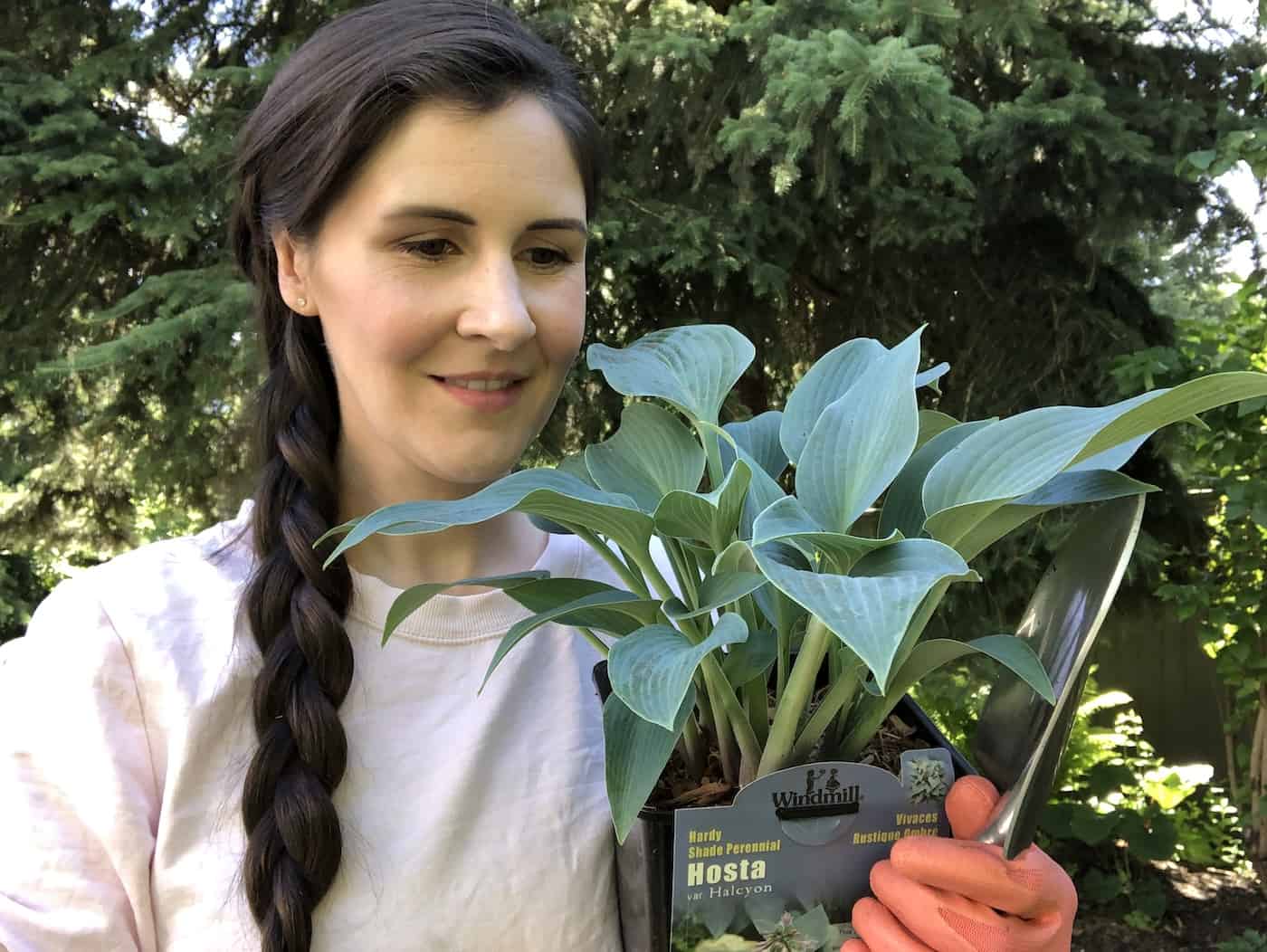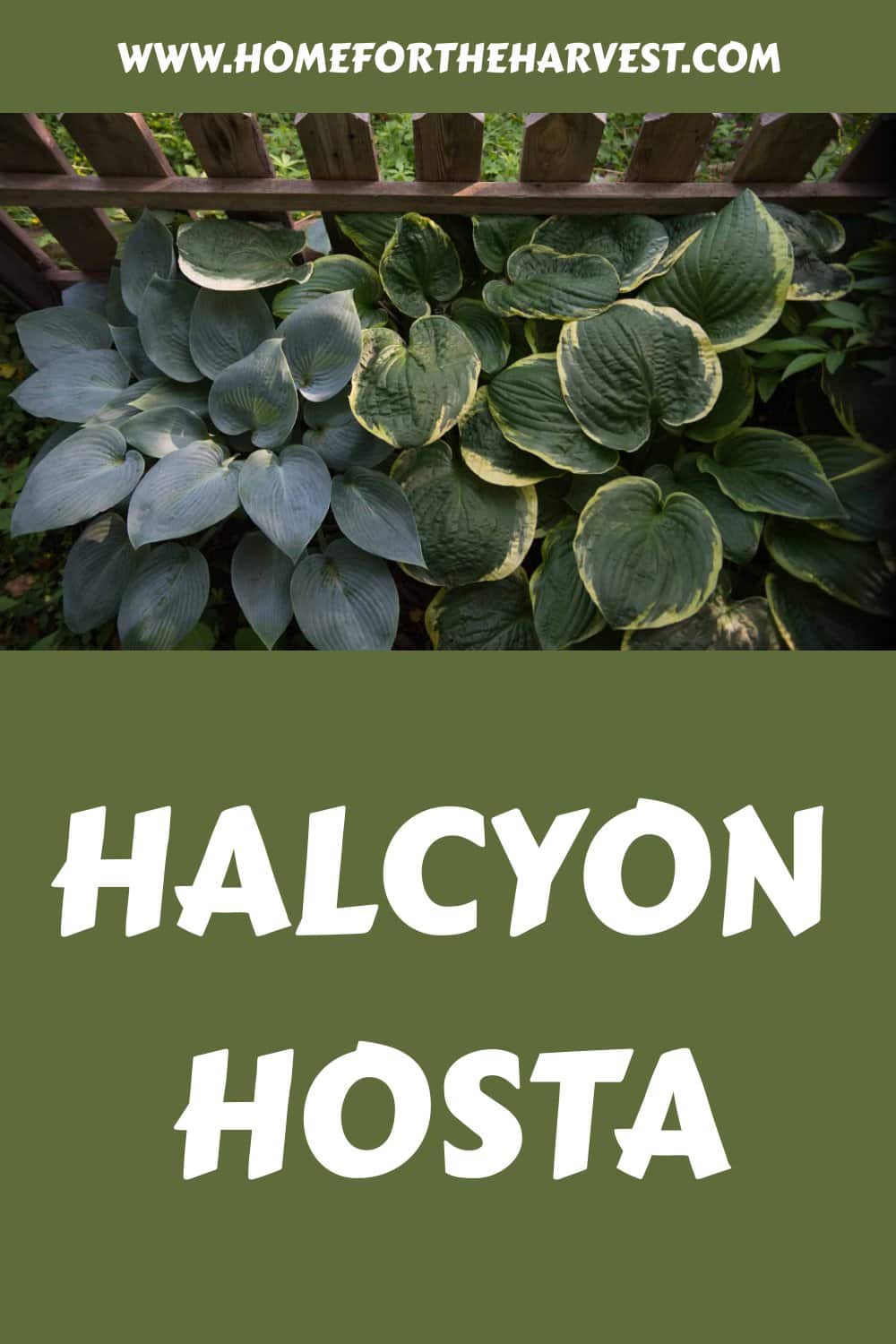Halcyon hosta is a popular blue hosta variety known for its beautiful heart-shaped dusky blue-green leaves. This medium-sized cultivar grows to about 40 inches wide and 18 inches tall. It has matte, pointed leaves and grows best in partial shade and rich, well-drained soil. ‘Halcyon’ is often used for breeding new blue hosta varieties.
Halcyon hosta basics
The Halcyon hosta has heart-shaped blueish leaves. However, sometimes they can be narrow and spear-shaped as well (particularly when the plants are young). The leaves of this hosta are smooth and flat with a fairly thick texture and waxy coating.
Halcyon hosta plants are medium-sized for hostas. They typically grow to be about 18 inches tall and can spread out to be anywhere between 36 to 42 inches wide. Halcyon sometimes doesn’t grow as quickly as some other varieties, and it will take several years for it to mature and reach its full shape. That said, this variety is particularly easy to grow and is also well-suited to growing in a container.
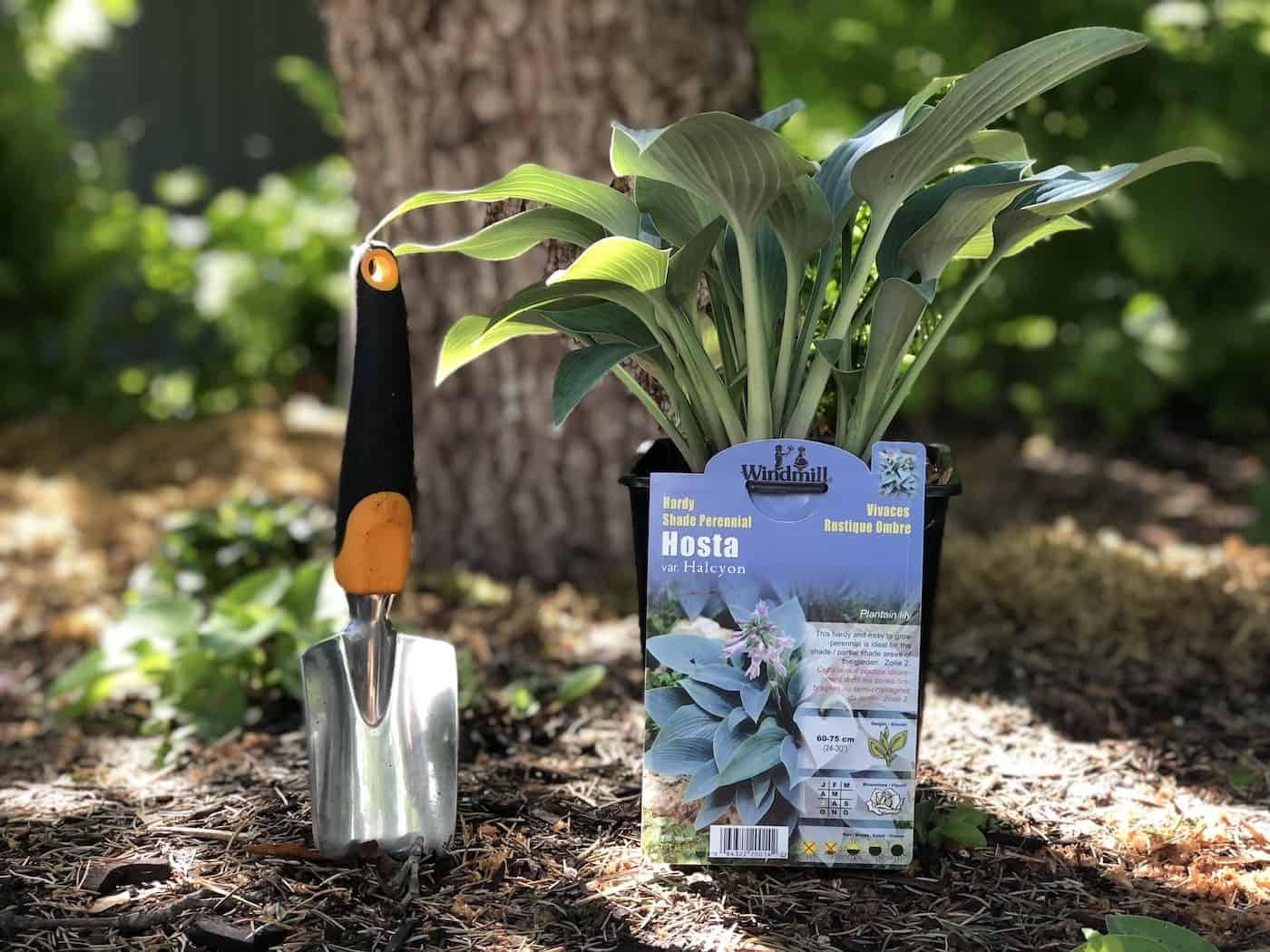
Halcyon hosta has bell-shaped pale lilac-white flowers. The flower stalks grow to be about 2 feet tall from the base of the plant. These scapes and their dense clusters of little flowers will appear sometime in the late summer and will bloom for a period of about three weeks, often in June or July.
The Halcyon hosta was developed in the UK by Eric Smith in the 1970s as part of his popular Tardiana group (which also includes ‘June’ and ‘Hadspen Blue.’) It was introduced through the British Hosta and Hemerocallis Society (BHHS) in 1988. Halcyon remains one of the most popular types of hostas worldwide and received the RHS Award of Garden Merit in 1993.
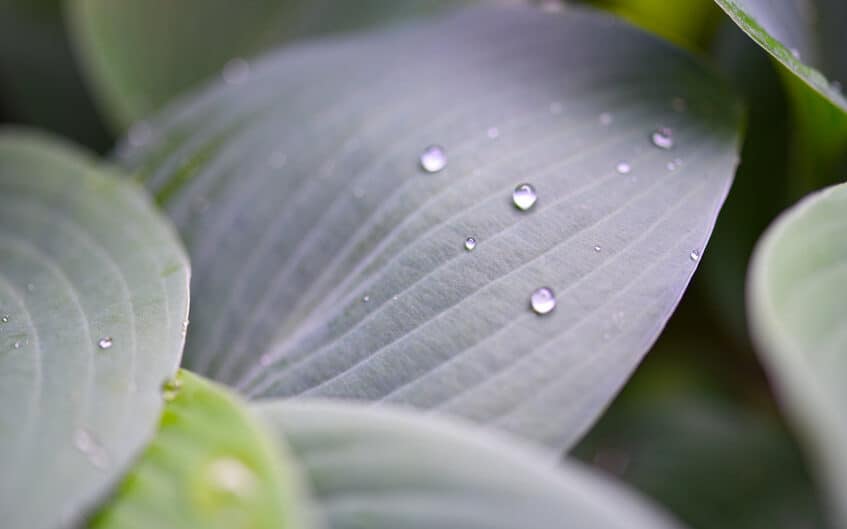
Where to plant Halcyon hostas
Choose a planting location in partial shade, if possible. Halcyon Hostas can grow well in full shade, but they do need some light to photosynthesize. They also tend to prefer rich soil that is well-drained.
This plant does best when planted in a place where there is partial shade, as too much sun exposure will dry out the leaves and eventually harm the plant. If you choose to plant this hosta under trees, you will need to water it more to compensate for what the tree roots might take.
Hostas grow best in nutrient-rich, slightly acidic fertile soil that is moist (not dry), but that drains excess water away easily. Typically, sandy loam soil enriched with organic compost is preferable. Hostas grow best in sheltered locations, where the large leaves are protected from harsh sunlight, strong winds, and potentially damaging precipitation like hail.
When you are planting more than one Halcyon hosta, each individual plant should be placed about 30 inches apart. That is the ideal spacing. The soil pH should be neutral – between 6.5 and 7.5 – but Halcyon can do okay in slightly higher ones; you just might want to use a soil acidifier to help lower the pH there before planting.
How to plant a Halcyon hosta
Here are the steps for planting a Halcyon hosta in your garden. I also made a video tutorial for this process, shown above.
- Prepare the soil: Hostas prefer well-draining, fertile soil. Amend heavy clay or sandy soils with organic matter like homemade compost.
- Dig a planting hole: Make the hole twice as wide and just as deep as the root ball of your potted hosta from the nursery. If you’re planting a bare-root hosta, dig the hole deep enough to stretch out all the roots below the soil.
- Loosen the root ball: Remove the plant from its pot. Gently loosen the roots – especially any thick white roots circling the root ball’s outside.
- Position the hosta: Place it in the hole, ensuring it’s at the same depth it was in the pot.
- Backfill the hole: Fill the hole with soil, gently packing it around the roots. Avoid burying the plant deeper than it was previously.
- Water thoroughly: After planting, water the hosta well to settle the soil around the roots.
- Apply organic mulch: Apply a layer of mulch, such as composted yard trimmings or bark mulch, around the plant to retain moisture and regulate soil temperature.
Hostas take a few years to reach their full size and shape. They are hardy and relatively low maintenance once established.
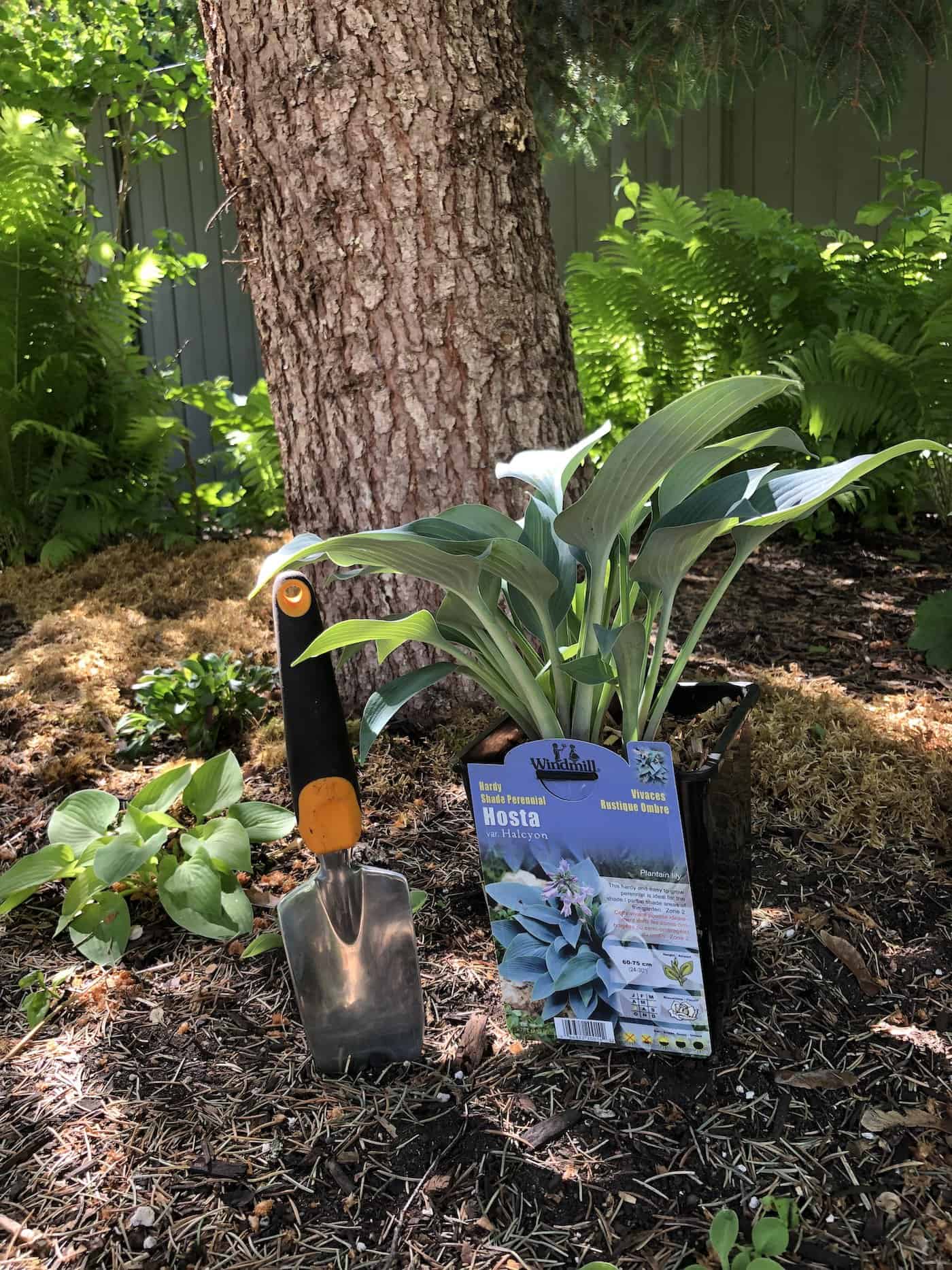
Caring for Halcyon hosta plants
Halcyon Hosta needs little care once it is established and matures. These plants are quite dependable on their own.
For the first few years, you will need to water the hosta regularly, at least weekly, or even more if you live in a place with a lot of heat. A good rule of thumb for watering hostas is to give them about 1” (25mm) of water each week. If the hostas receive this much rain that week, they likely don’t need to be watered, but any shortfall should be made up with supplemental watering.
Try not to water the leaves of the hosta, and instead apply the water directly to the soil over the top of the roots (drip irrigation works very well for hostas). Hostas are best done early in the morning (evening watering can encourage overnight slug and snail damage).
Halcyon Hostas are pretty slug-resistant, but watch out for slugs and snails appearing around them because they can damage the foliage. It’s also prone to deer feeding as well.
Halcyon hosta plants won’t need much fertilizer, but it might be a good idea to feed them in the spring if your soil is poor or if you notice the hosta isn’t growing as well as it should. You can use a perennial plant fertilizer, an evergreen plant fertilizer, or even a general all-purpose plant fertilizer. Just be sure to apply it according to package directions.
If given enough light and the proper shade ratio, the brilliant blue leaf color will stay for most of the summer and stretch into fall. Halcyon is one of the most long-lasting, dependable blue hostas. After the blooming season is over, cut off the flower stems. Any leaves that are discolored should be trimmed back or cut off back to the ground
The plant can survive well in USDA zones 3 through 9, but it isn’t meant to grow in very warm climates or places with high levels of humidity. Hostas require several weeks of winter chilling below 40°F (4°C), in which the plants become dormant and rest before spring.
The leaves of hostas are somewhat frost tolerant and can survive light frosts with air temperatures down to about 28°F (-2°C). But when a hard frost kills the leaves, trim them off at the base to minimize chances of overwintering pests and disease.
When propagating a hosta plant by division, do it in late summer or early spring. You can do this by digging up the plant and dividing it carefully using a spade or shears. You can also just remove a portion of it and transplant it somewhere else.
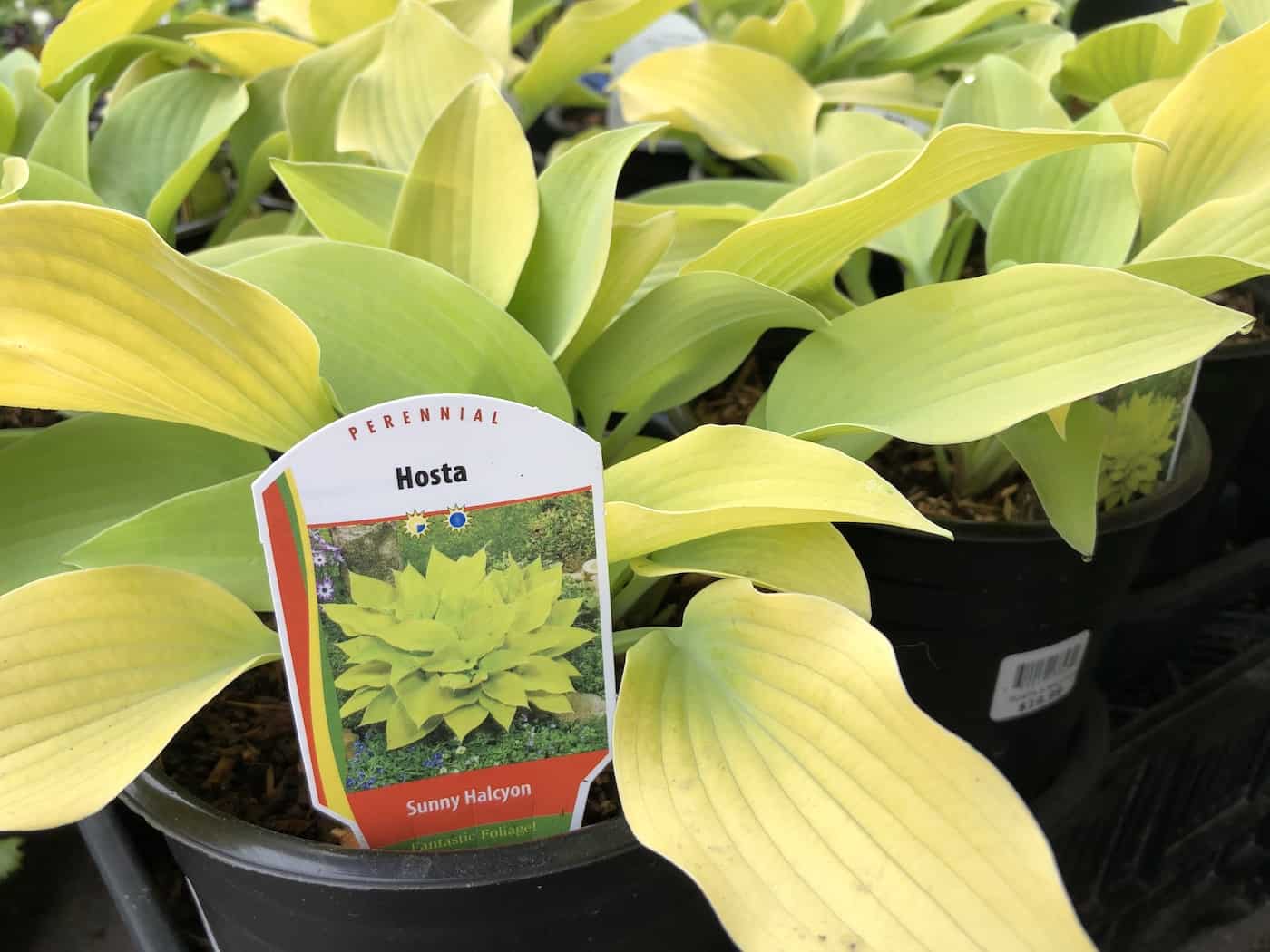
Similar hosta varieties
Here are some other hosta cultivars with blue leaves similar to Halcyon hosta:
- Blue Silver Hosta
- Powderpuff Hosta
- Tokudama Hosta
- Winfield Blue Hosta
- Goldbrook Grayling Hosta
- Kiwi Blue Baby Hosta
- Prarie Sky Hosta
- Ultramarine Hosta
- Silver Bay Hosta


